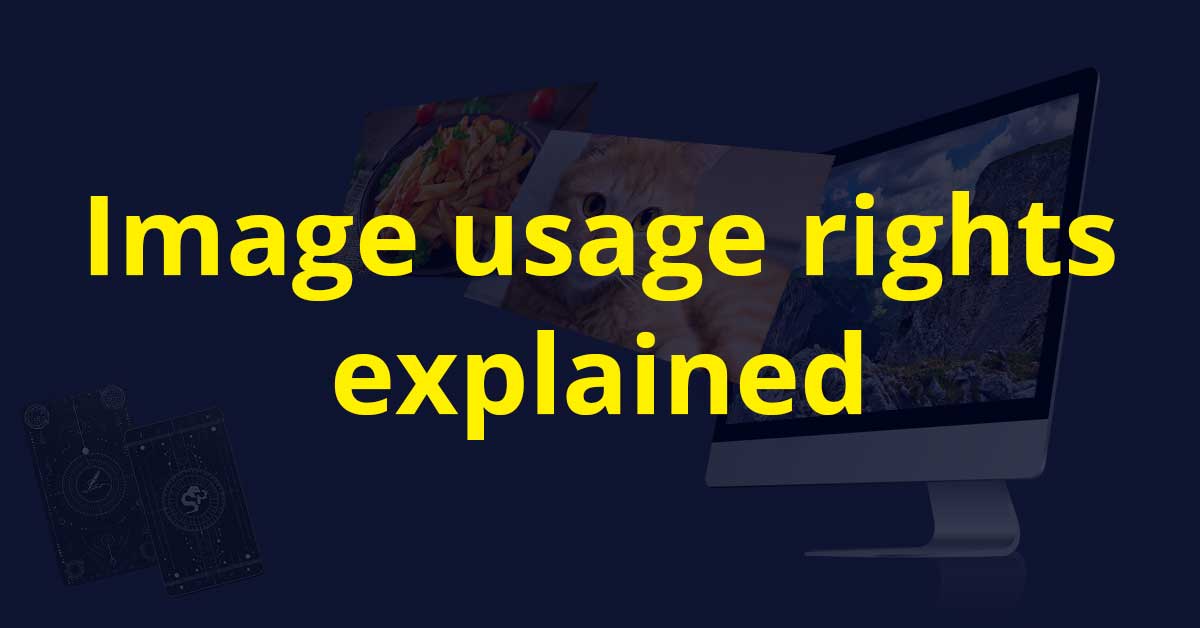Let’s talk about image usage rights and explain it to everybody. In today’s digital world, visuals are a powerful tool that can make or break your online presence. Whether running a blog, an e-commerce store, or a social media account, high-quality photos and images are essential for capturing your audience’s attention and effectively conveying your message. However, with the increasing availability of images online, it’s crucial to understand the importance of using licensed photos and pictures. This guide will explore why licensing matters, the different types of image licenses, where to find licensed photos, and how to use them correctly to avoid legal issues.
Why using licensed photos and images matters
1. Legal compliance
One of the most important reasons to use licensed photos and images is to stay legally compliant. Unauthorized use of images can lead to serious legal consequences, including fines, lawsuits, and even the shutdown of your website. Copyright laws protect the rights of photographers and creators, and using their work without permission violates these laws.
2. Professionalism and credibility
Using licensed images shows that you respect the intellectual property of others and are committed to maintaining high ethical standards in your business. This professionalism reflects positively on your brand, helping to build trust with your audience and enhancing your credibility.
3. Quality assurance
Licensed images are often of higher quality than free or unlicensed alternatives. When you purchase or legally obtain a license for an image, you can be confident that the image meets specific quality standards, which is crucial for maintaining a polished and professional appearance across your digital platforms.

Understanding different types of image licenses
Not all image licenses are created equal. Understanding the different types of licenses will help you choose the right images for your needs and ensure you’re using them correctly.
1. Royalty-Free License
A royalty-free license allows you to use an image multiple times after paying a one-time fee. These images can typically be used for various purposes, including commercial and personal projects, without paying additional royalties or licensing fees each time the image is used. However, royalty-free does not mean free—there is still an initial license cost.
2. Rights-Managed License
Rights-managed (RM) licenses are more restrictive than royalty-free licenses. When you purchase an RM license, you buy the right to use the image for a specific purpose, duration, and geographic location. The cost of an RM license depends on how you intend to use the image. For example, using an image on the homepage of a popular website might cost more than using it in a small brochure.
3. Creative Commons License
Creative Commons (CC) licenses allow creators to grant certain usage rights to their work while retaining others. There are several types of CC licenses, ranging from allowing any type of use (even commercial) to restricting use to non-commercial purposes only. It’s essential to read and understand the specific terms of each CC license before using an image.
4. Public Domain
Images in the public domain are not protected by copyright and can be used freely without the need for permission or payment. These images may have been released into the public domain by the creator, or the copyright may have expired. However, it’s still important to verify that an image is genuinely in the public domain before using it.
5. Editorial Use Only
Some images are labeled as “editorial use only,” meaning they can only be used in contexts that are newsworthy or educational, such as in news articles, blogs, or documentaries. These images cannot be used for commercial purposes, such as in advertisements or product packaging.

Where to find licensed photos and images
Finding licensed images doesn’t have to be challenging or expensive. Several platforms offer high-quality, licensed images to suit various needs and budgets.
1. Stock Photo Websites
Stock photo websites are a popular source of licensed images. They offer millions of high-quality photos, illustrations, and vectors for various uses. Some of the most popular stock photo websites include:
- Shutterstock: Offers a vast collection of royalty-free images, videos, and music tracks. Plans range from paying per image to subscription models with unlimited downloads.
- Getty Images: Known for its high-quality, rights-managed images, Getty Images is a go-to source for editorial, commercial, and creative projects.
- iStock: A subsidiary of Getty Images, iStock offers both royalty-free and rights-managed images at a more affordable price point.
- Adobe Stock: Integrated with Adobe Creative Cloud, Adobe Stock provides royalty-free images, graphics, and videos that are easy to use within Adobe’s suite of tools.
2. Creative Commons websites
If you’re looking for free or low-cost images, Creative Commons websites are a great option. These platforms offer images under various CC licenses, so you must check the specific terms before using them.
- Flickr: A popular photo-sharing platform where many users share their work under Creative Commons licenses.
- Pexels: Provides high-quality images and videos that are free to use under the Pexels license, which is similar to a CC0 license.
- Unsplash: This site offers a large collection of high-resolution images released under the Unsplash license, which allows for free use, including for commercial purposes.
3. Public Domain Resources
Public domain resources are the way to go for images that are free to use without restrictions. These platforms offer images that are not protected by copyright, either because the copyright has expired or the creator has released them into the public domain.
- Pixabay: Offers a wide range of public domain images and videos, free for use in commercial and non-commercial projects.
- Wikimedia Commons: A media repository of free-to-use images, sounds, and videos, many of which are in the public domain.
- The Public Domain Review: A collection of public domain images, artworks, and historical resources from various archives.
Best practices for using licensed images
Using licensed images responsibly is about more than just legality. It’s also about maintaining the integrity of your brand and respecting the rights of creators. Here are some best practices to follow:
1. Always read the license terms
Before using any image, thoroughly read and understand the license terms. Different licenses come with different permissions and restrictions, so it’s crucial to know what you can and cannot do with an image. For example, some licenses may allow you to use an image for commercial purposes, while others may restrict it to non-commercial use only.
2. Give proper attribution
If an image requires attribution, ensure you give proper credit to the creator. This often involves including the photographer’s name, the title of the work, and a link to the license. Not only is this a legal requirement in many cases, but it also shows respect for the creator’s work.
3. Avoid modifying images without permission
Some licenses, particularly Creative Commons, may prohibit modifying or altering an image without the creator’s permission. Always check the license to see if edits are allowed. If in doubt, it’s safer to use the image as-is or find an alternative that permits modifications.
4. Keep records of licenses
Maintain a record of all licenses for the images you use, including screenshots of the license terms and receipts for purchased images. This documentation can protect you in case of a legal dispute or audit.
5. Be cautious with free images
While free images can be a great resource, they can also come with risks, such as unclear licensing or lower quality. Ensure you’re downloading from reputable sources, and double-check the license terms to avoid any potential legal issues.
6. Regularly review and update your image library
As copyright laws and licensing terms can change, it’s important to regularly review your image library and update or replace images as needed. This ensures that all the images you use remain compliant with current laws and licenses.
Common mistakes to avoid when using licensed images
Even with the best intentions, it’s easy to make mistakes when using licensed images. Here are some common pitfalls to avoid:
1. Assuming all Images online are free to use
Just because an image is easy to find online doesn’t mean it’s free to use. Many images are protected by copyright, and using them without permission can lead to legal trouble. Always check the licensing information before using an image.
2. Neglecting to read the fine print
Licenses can be complex, with specific terms and conditions that vary from image to image. Failing to read and understand these terms can result in unintentional misuse of an image, which can have serious legal consequences.
3. Forgetting to renew licenses
Some licenses, particularly rights-managed licenses, may require renewal after a certain period. Forgetting to renew a license can leave you vulnerable to copyright infringement claims.
4. Ignoring attribution requirements
Many Creative Commons licenses require proper attribution. Failing to give credit where it’s due can result in a breach of the license terms, which could lead to legal action.
5. Using images beyond their intended purpose
Using an image for a purpose not covered by the license, such as using an editorial image in a commercial ad, can result in legal penalties. Ensure your chosen image fits your intended use and complies with the license terms.
Conclusion on image usage rights
Using licensed photos and images is not just about avoiding legal issues. It’s about respecting the work of creators and maintaining the integrity of your brand. By understanding the different types of licenses, sourcing images from reputable platforms, and following best practices, you can use images confidently and legally across all your digital platforms. Remember, investing time and resources into properly licensing your images is a small price to pay for the security, professionalism, and quality it brings to your business.

